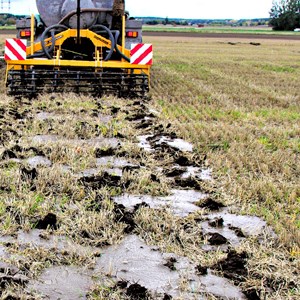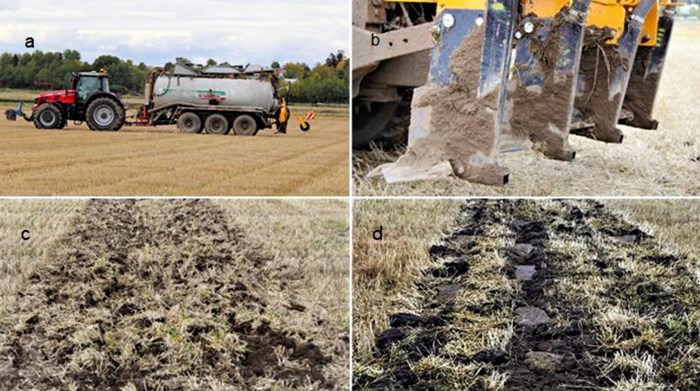Gizachew Tarekegn Getahun has evaluated the effects of subsoil management options on crop yield, soil properties and the environment in his new doctoral thesis. Subsoil loosening combined with straw injection increased the amount of organic carbon and reduced nitrogen loss. Addition of lime improved soil structural stability.
The layer below ploughing depth is called the subsoil and is often at about 25 cm in Sweden. The subsoil can store large amounts of water and plant nutrients. For example, the subsoil can supply 10 to 65% of the nutrients used by crops.
Resistance to drought increases if crop roots can access water in the subsoil
Enabling crop roots to access these subsoil resources, especially water, will be important under future climate change when droughts are predicted to become more frequent. However, subsoil compaction or development of a dense plough pan following years of tillage can prevent crop roots from accessing water and nutrients stored in the subsoil.
No easy way to improve the subsoil
Topsoil structure is easy to manage by tillage, but there are no easy technical solutions to improve the subsoil. Machines with long mechanical tines can be used to improve the subsoil, but the effects often do not last long. Mechanical loosening is also expensive, and the high costs are not covered by benefits in terms of higher crop yield.
Combining mechanical subsoil loosening with addition of straw, lucerne pellet, compost, or lime could give longer-lasting improvements in subsoil structure, thereby increasing plant-available water content and crop nutrient supply, which would result in higher crop yield.
– In my thesis, I evaluated the effects of subsoil management options on crop yield, soil properties and the environment in field and lysimeter experiments at Säby in Uppsala, says Gizachew.
Laboratory incubations of soil from Kungsängen, Uppsala, were also performed, to evaluate the effect of adding lime on dissolved reactive phosphorus and in stabilising the soil structure.
Soil density was reduced with straw injections
The results showed that subsoil loosening combined with straw injection at 25-34 cm depth increased the amount of organic carbon in the soil and reduced the density of soil, with the effects lasting for at least three years in the field.
– We saw that there were more earthworms and biopores in the soil along the straw injection lines. Soil clods in treated plots were more easily fragmented by hand and earthworm casts were common. However, there was no great increase in crop yield, explains Gizachew.
Subsoil loosening combined with straw addition reduce nitrogen losses
Experiments on extracted soil columns showed that subsoil loosening combined with straw addition at 25-40 cm depth reduced short-term nitrogen losses via drainage water by about 62%, thus lowering the environmental impact in terms of water quality.
Addition of lime materials to the subsoil improved soil structural stability.
– These promising results should be further tested and evaluated in long-term field experiments. Future research may focus on developing technical solutions and management options that can complement each other in a holistic approach to address multiple subsoil problems at once, concludes Gizachew.


